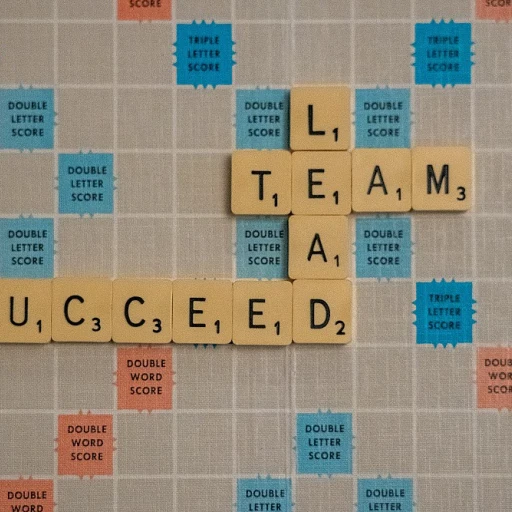
Understanding the Importance of Evaluation and Feedback
The Critical Role of Evaluation and Feedback in Tech Hiring
Evaluating candidates and providing timely feedback play crucial roles in the tech hiring process. Effective assessment during recruitment not only allows hiring managers to identify the best-fitted candidates but also enhances the overall quality of the recruitment process. This importance is echoed across domains such as education, where teachers rely on continuous feedback to foster student learning. By integrating these principles into tech hiring, organizations can better support their candidates' development and improve decision making.
High quality evaluations are not single events but continuous processes that engage both the hiring team and candidates. By incorporating effective feedback mechanisms, companies can provide valuable insights to candidates that help them in refining their skills, aligning with the company's goals, and ultimately contributing to organizational success.
The assessment learning process during recruitment mirrors educational strategies that influence student performance through constructive feedback. Similarly, by understanding these parallels, companies can leverage actionable feedback to boost candidate performance which in turn encourages a better work environment. Not only does this process help in selecting the best talent, but it also aids in developing a culture of continuous improvement and learning amongst new hires.
Instituting a real time feedback process further aids in refining the recruitment strategy. This approach not only provides feedback students and learners in education rely on but also helps candidates better understand their strengths and weaknesses. This direction ensures that tech companies are not just filling positions, but nurturing potential employees who are future-ready.
Key Components of Effective Evaluation Methods
Unpacking Essential Aspects of Evaluation Approaches
In the realm of tech hiring, effective evaluation is vital for selecting the right candidates. It's not just about assessing technical skills, but also how candidates fit into the organization's culture and vibe. Incorporating diverse and comprehensive evaluation methods ensures a fair and accurate hiring process. The use of quality evaluation tactics is crucial. Employing diverse methods, such as technical assessments, coding challenges, and behavioral interviews, provides a multi-faceted view of a candidate's capabilities. This approach helps capture both hard and soft skills, which are equally important for successful integration into a team. To better assess technical skills, interactive coding platforms and problem-solving tests offer real time insights into a candidate's performance. These tools help to gauge how potential hires tackle real-world problems, illuminating their thought processes and problem-solving abilities. Moreover, situation-based assessments can offer a glimpse into a candidate's potential for growth and adaptability. By presenting candidates with scenarios they might encounter on the job, hiring teams can evaluate not only current skills but also the potential for skill development. This is essential for fostering continuous learning and improvement, a core part of tech culture. Another critical component is the evaluation of cultural fit. While technical prowess is vital, aligning with a company's values and work environment can often be a decisive factor. Interviews that incorporate questions about past experiences, team dynamics, and conflict resolution help gauge this compatibility. Taking a holistic approach to evaluation, one that includes both structured assessments and informal interactions, aids in painting a complete picture of the candidate. This helps in providing feedback that is not only constructive but grounded in a thorough understanding of a candidate's experiences and potential contributions. For companies and recruiters aiming for an efficient hiring strategy, it's also necessary to continually refine evaluation techniques. Listening and responding to feedback from both candidates and team members about the assessment process can help in fine-tuning methods over time, leading to more effective outcomes in candidate selection. Incorporating structured and diverse evaluation strategies is not just an effective way of hiring but enhances the overall quality of hires, paving the way for significant improvements in tech teams' performance and innovation capabilities.Innovative Tools and Technologies for Evaluation
Revolutionizing Assessment with Innovative Tools
In the quest for mastering effective evaluation in tech hiring, leveraging the right tools and technologies can profoundly enhance the process. These innovative solutions not only assist in conducting quality evaluation but also streamline the assessment feedback for candidates, allowing evaluators to provide real-time insights. To navigate these advancements, it's important to focus on certain key areas:- Automated Evaluation Platforms: These platforms integrate smart algorithms to assess candidate performance efficiently. By automating repetitive tasks, they provide feedback that saves time and maintains high quality.
- AI-Powered Assessments: Artificial Intelligence is increasingly being used to personalize the evaluation process. This technology adapts to the candidates' learning experience, ensuring that the feedback provided is tailored to individual student learning levels.
- Interactive Learning Tools: These instruments transform how feedback is given. By fostering a more engaging feedback process, interactive tools simulate real-world scenarios that help candidates demonstrate their skills effectively.
- Cloud-Based Collaboration Platforms: These tools facilitate seamless collaboration between teaching professionals and recruiters. With such platforms, student feedback can be shared swiftly and securely, contributing to an effective feedback process.
Crafting Constructive Feedback for Candidates
Formulating Actionable and Supportive Insights
Providing feedback in tech hiring necessitates a delicate balance of clarity and encouragement. Crafting constructive feedback for candidates is essential not only for their personal learning but also for enhancing the overall quality of your hiring process. Creating actionable insights involves understanding the core elements of quality feedback that genuinely aids a candidate's growth. Facilitating a supportive feedback process can lead to improved learning experiences for your applicants, much like effective teaching does for learners in educational environments. Start by focusing on how feedback can positively impact the candidate’s performance. Look at assessment feedback from an educational standpoint, where constructive criticism is used to propel student learning. Similar strategies can be beneficial when assessing candidates, allowing them to learn and improve from their evaluation results.- Be Clear and Concise: Ensure that the feedback is easy to comprehend. Avoid jargon that might confuse the candidate. Clarity fosters a deeper understanding, making it a key element in effective feedback.
- Balanced Commentary: Incorporate both strengths and areas for improvement. This balance mirrors the teachings of quality education, where both positive reinforcement and constructive criticism guide learners towards improved performance.
- Timely Delivery: Real-time feedback can significantly enhance the learning curve of a candidate. Prompt assessments help in maintaining the momentum for learning and improvement.
- Personalization: Tailor feedback to address specific skills and experiences of the candidate. This personalized approach boosts engagement, similar to how teachers adjust their methods to meet the diverse needs of students.
- Encourage Self-Reflection: Encourage candidates to reflect on the feedback provided. This aspect of self-assessment is pivotal in helping individuals become more self-aware and proactive in their learning journey.
Integrating Feedback into the Hiring Process
Integrating Feedback Seamlessly into Recruitment
Integrating feedback into the hiring process is a crucial component for ensuring consistent learner performance and development. A well-functioning feedback loop can also lead to more high-quality hires by allowing both evaluators and can didates to gain a better understanding of expectations and outcomes.
One effective strategy is adopting an incremental assessment feedback approach. By providing feedback at various stages of the recruitment process, candidates can adapt and improve their responses over time. Similar to teaching methods in education, where teachers give continuous learner assessment, recruiters too should aim to give timely constructive feedback that helps potential candidates grow.
Moreover, employing a framework for quality feedback ensures it remains consistent and free from bias. Develop a set format for providing feedback so it becomes a reliable part of the evaluation process. Just as students benefit from consistent assessment systems, candidates too will appreciate clarity and structure.
Alongside individual feedback, quality feedback integration involves evaluating patterns and trends across multiple hires. By assessing overall teaching methods within the hiring process, organizations can continually refine their evaluation techniques and ensure the feedback being provided enhances the recruitment quality.
Lastly, embracing real-time feedback mechanisms can be an advantageous tool. These systems not only save time but also streamline the process, allowing candidates to receive feedback almost instantaneously, just as students benefit from timely education feedback.
The goal of integrating feedback should be continuous learning for all parties involved. Evaluators get to hone their methods, companies achieve better decision making, and candidates receive the guidance necessary for professional growth. These best practices in feedback integration will lead to constructive and continuous improvement in the recruitment journey.












